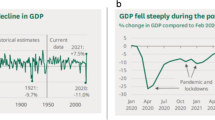Abstract
Objective: To assess the overall drug use in Swedish nursing homes or equivalent residential facilities, and changes in the quality of drug use that have occurred over a 3-year period.
Design and Setting: The nursing homes included in a 1995 intervention study were investigated again during the Spring of 1998. The previous intervention aimed at improving drug use through improved teamwork among physicians, pharmacists, nurses and nurses’ assistants. A total of 36 nursing homes participated in the follow-up, 18 of which received team training in order to conduct interventions regarding drug use in the 1995 study (team training homes). Eighteen did not receive team training and served here as control homes.
Participants: The sample consisted of 1549 long-term care residents with an average age of 84 years. 68% of the residents were female and 53% had a documented diagnosis of dementia. 10% had a disorder with a psychotic component and 21% were diagnosed with depression.
Measurements: Lists of each resident’s prescriptions were collected. In addition, data about resident and facility characteristics were collected from the charge nurses. Specific quality indicators based on published guidelines and recommendations were developed to measure drug appropriateness. Measures included the proportion of users of the 15 most prescribed drugs, as well as the proportion of residents prescribed less appropriate medications according to the quality indicators.
Results: The number of medications increased from an average of 8.0 to 8.8 per resident, but there was a decrease (23%) in the prescribing of antipsychotics to residents without documentation of a psychotic symptom. Furthermore, there was a decrease in the proportion of residents prescribed two or more drugs from the same therapeutic class of psychotropics. There was also a reduction in the prescription of non-recommended sedative-hypnotics (26%) and non-recommended anxiolytics (15%) in all nursing homes. In 1998, significantly lower proportions of residents in team training homes were prescribed (a) more than three drugs that could increase the risk of confusion, (b) non-recommended hypnotics, and (c) combinations of drugs that could lead to interactions, than were residents in the control homes.
Conclusion: The nursing homes that had received team training and served as intervention homes in the previous study still had a significantly higher quality of drug use with respect to three of the quality criteria. The study demonstrates that, although much still remains to be done to optimise drug use for the sick and elderly in nursing homes, quality assurance programmes with a multidisciplinary approach are effective and should be further developed and implemented.






Similar content being viewed by others
References
Socialstyrelsen. Läkemedel på sjukhem [in Swedish]. Stockholm: Social styrelsen, Apoteksbolaget, 1996 (Socialstyrelsen följer upp och utvärderar; 1996: 1) With an English summary: Drug use in nursing homes
Lazarou J, Pomeranz BH, Corey PN. Incidence of adverse drug reactions in hospitalized patients: a meta analysis of prospective studies. JAMA 1998; 279(15): 1200–5
Beard K. Adverse reactions as a cause of hospital admission in the aged. Drugs Aging 1992; 2(4): 356–67
Danell-Boman M, Bäckström M, Dahlqvist R, et al. Läkemedels-biverkningar som orsak till akut intagning vid medicinklinik [in Swedish]. Umeå: Norrlands Universitetssjukhus, 1998 Svenska läkarstämmans program, sammanfattningar. Göteborg, Sweden, 1998
Beardsley RS, Larson DB, Burns BJ, et al. Prescribing of psychotropics in elderly nursing home patients. J Am Geriatr Soc 1989; 37(4): 327–30
Harrington C, Tompkins C, Curtis M, et al. Psychotropic drug use in long-term care facilities: a review of the literature. Gerontologist 1992; 32(6): 822–33
Andersson M. Drugs prescribed for patients in nursing homes or under medical home care. Compr Gerontol [A] 1989; (3 Suppl.): 8–15
Gulmann NC. Dementia and ethics. From psychopharmacologic agents to living wills [in Danish]. Nord Med 1993; 108(10): 266–70
McGrath AM, Jackson GA. Survey of neuroleptic prescribing in residents of nursing homes in Glasgow. BMJ 1996 Mar 9; 312(7031): 611–2
Sandman PO, Wallbom A. Characteristics of the demented living in different settings in Sweden. Acta Neurol Scand Suppl 1996; 168: 96–100
Socialstyrelsen. Ädelparadoxen: sjukhemmen före och efter Ädelreformen [in Swedish]. (Äldreuppdraget; 98: 11) Stockholm: Socialstyrelsen, 1998
Medical Product Agency & The Norwegian Medicines Control Authority. Treatment of mental conditions in patients with dementia. Workshop. Uppsala, Sweden 1994 Mar 1995; 1: 9–10
Starr M, Whalley LJ. Drug-induced dementia. Incidence, management and prevention. Drug Safety 1994; 11(5): 310–7
Avorn J, Gurwitz JH. Drug use in the nursing home. Ann Intern Med 1995; 123(3): 195–204
Schmidt IK, Claesson CB, Westerholm B, et al. The impact of regular multidisciplinary team interventions on psychotropic prescribing in Swedish nursing homes. J Am Geriatr Soc 1998; 46(1): 7782
Classification of Diseases and Related health problems. 1997. Primary Care. National Board of Health and Welfare, Stockholm, Sweden
Guidelines for ATC Classification. WHO Collaborating Centre for Drug Statistics Methodology, Norway and Nordic Council on Medicines, Sweden, 1997
SPSS. Base System Users Guide. Release 6.0 Chicago SPSS Inc., 1993
Vinge E. Men and women respond differently to drugs. Hormone dependent pharmacodynamic differences are rarely studied. Lakartidningen 1998 Jul 8; 95(28–29): 3177–82
Thapa PB, Gideon P, Cost TW, et al. Antidepressants and the risk of falls among nursing home residents. N Engl J Med 1998 Sep 24; 339(13): 875–82
Schmidt IK, Claesson CB, Westerholm B, et al. Physician and staff assessments of drug interventions and outcomes in Swedish nursing homes. Ann Pharmacother 1998; 32(1): 27–32
Socialstyrelsen. Läkemedel på sjukhem — en uppföljning av kvaliteten [in Swedish]. (Användning av läkemedel hos äldre) Stockholm: Socialstyrelsen, 1999
Acknowledgements
The authors acknowledge the invaluable support and resources provided by Dr Cecilia Claesson at the National Board of Health and Welfare during the study. The study was funded by the National Board of Health and Welfare.
Author information
Authors and Affiliations
Corresponding author
Rights and permissions
About this article
Cite this article
Schmidt, I.K., Fastbom, J. Quality of Drug Use in Swedish Nursing Homes. Clin. Drug Investig. 20, 433–446 (2000). https://doi.org/10.2165/00044011-200020060-00006
Published:
Issue Date:
DOI: https://doi.org/10.2165/00044011-200020060-00006




